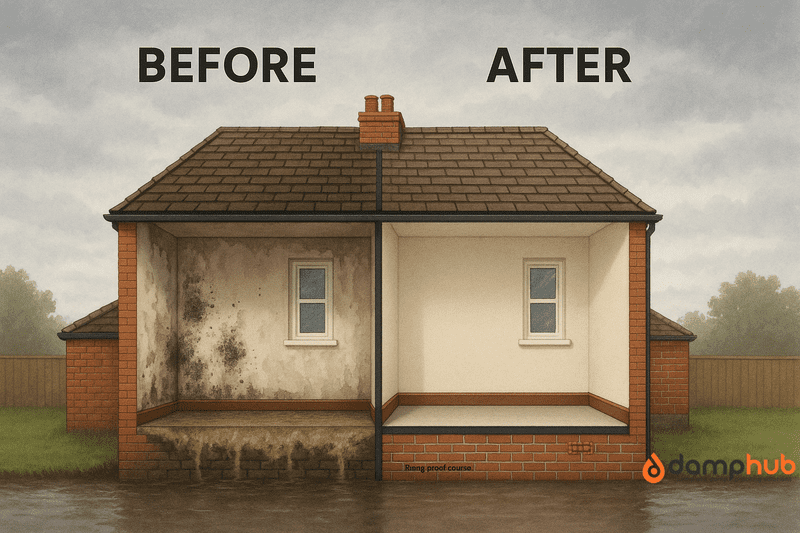
Quick Takeaways
- ✓ Over 900,000 UK homes have damp issues — mostly in older properties.
- ✓ Chemical damp proofing lasts 20–30 years when installed correctly.
- ✓ Damp proofing costs range from £300 to over £5,000, depending on the treatment.
- ✓ Free council grants or loans may be available, especially for low-income or vulnerable households.
- ✓ Damp proofing is only worth it when tailored to the actual cause — not based on assumptions.
Did you know that over 900,000 homes in England have damp problems?
That’s nearly 4% of all households, and most of them are older properties where moisture has worked its way into walls, floors, or timbers.
In practical terms, that means flaking plaster, black mould, musty smells, and in many cases, structural timber decay. For buyers, sellers, and homeowners, these issues don’t just affect comfort — they can reduce a property’s value, block a mortgage, or lead to serious repair costs down the line.
Damp proofing is the set of techniques used to stop this. Whether it’s a chemical barrier in a Victorian terrace or a plastic membrane in a new build, the goal is the same: to keep moisture from rising through the building fabric.

In this guide, we’ll cover:
- What does damp proofing near me mean in UK construction
- How long does damp proofing last
- Typical costs in the UK — from small patches to full-house treatment
- Where to find free government support or grants
- When it’s required by law or mortgage lenders
- And what the rules say about damp proof course installation in new builds
We’ve based everything on current UK regulations, repair costs, and advice from independent damp surveyors. No vague advice — just the facts you need to make informed decisions about your property.
What is damp proofing?
Damp proofing is the umbrella term for any method used to stop unwanted moisture getting into your walls, floors, or timbers. The aim is to prevent rising damp, penetrating damp, or condensation-related issues — all of which can lead to rot, mould, or structural damage if ignored.
There isn’t just one “damp proofing” method. It can mean:
- Installing a damp proof course (DPC) — usually a barrier in the wall that stops rising damp from the ground.
- Applying a damp proof membrane (DPM) under concrete floors to block moisture.
- Using water-repellent coatings on external walls to stop rain from soaking through.
- Improving ventilation and insulation to prevent condensation.
Most homes in the UK already have a DPC in place — typically a horizontal strip of slate, plastic, or chemical material set into the brickwork a few inches above ground level. But if that barrier breaks down, gets bridged (e.g., by soil or render), or wasn’t installed properly to begin with, damp can creep back in.
Good to Know:
Damp proofing near me isn’t always about adding something new. Sometimes, it’s about repairing old details — fixing external pointing, clearing blocked air bricks, or unblocking gutters that dump rain straight into your wall.
How long does damp proofing last?
That depends on what kind of damp proofing you’re talking about — and how well it was done in the first place.
For a physical damp proof course (DPC):
If it was installed properly, a physical DPC (like a slate or plastic barrier) can last well over 100 years. That’s why older Victorian homes that still have their original slate DPCs often stay bone dry, as long as no one’s bridged it with raised soil, render, or new flooring.
👉 Related Blog: How to Remove Damp from Walls: The Ultimate Guide
For chemical DPC injections:
These are more common in retrofits. The installer drills holes into your wall and injects a water-repellent cream or liquid to create a barrier. Done correctly, chemical damp proofing should last at least 20–30 years. Some brands even come with guarantees, though it’s worth reading the small print.
Problems usually come down to poor prep. If the walls weren’t dry enough, if salt-contaminated plaster wasn’t removed, or if the cause of the damp wasn’t correctly identified, the treatment can fail long before the guarantee ends.
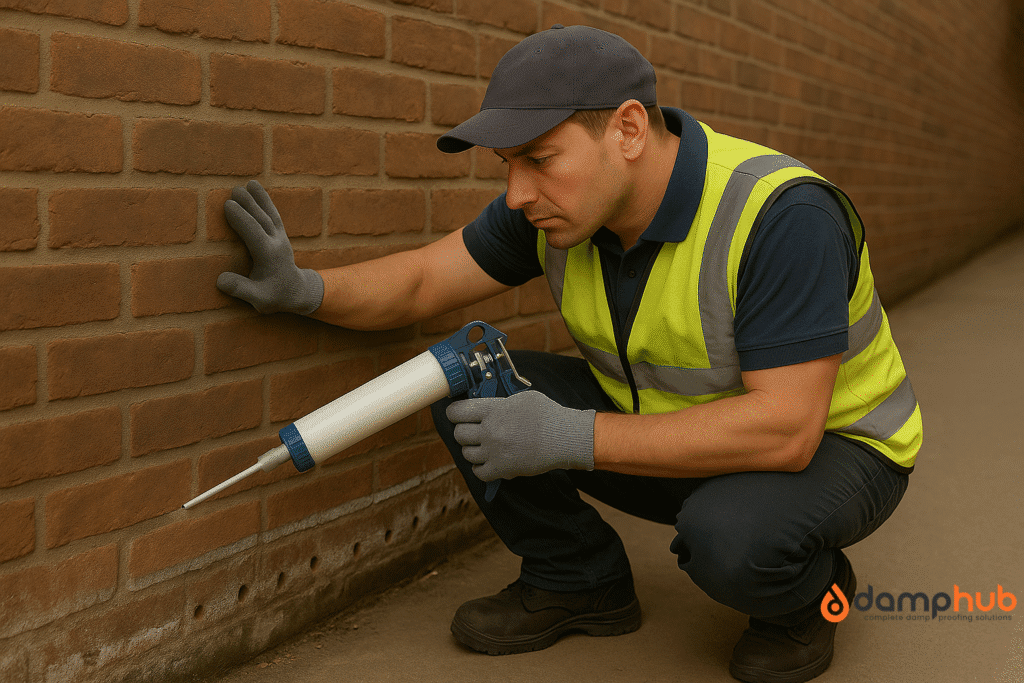
For other methods (membranes, coatings, etc.):
- Damp-proof membranes under floors are usually long-lasting unless physically damaged.
- External waterproof coatings may need reapplying every 10–15 years, depending on exposure.
Pro Tip:
If your damp proofing didn’t last as long as promised, check the guarantee — some companies offer insurance-backed cover that stays valid even if they’ve gone bust.
Our Expert Take:
❝Good damp proofing near me doesn’t need to be repeated often. But the work has to be right, and it has to match the real cause of the damp.
Are There Free Government Grants for Damp Proofing UK?
You won’t find a single national scheme offering free damp proofing for everyone, but depending on your situation, there might be help available.
Grants tend to be handled locally, and they usually come with conditions. If the damp in your home is causing health problems or making the property unsafe, your local council may offer support, especially if you’re on a low income or have a disability.
1. Council repair grants or loans
Most help starts at the council level. Some offer small grants or low-interest loans to fix problems like rising damp or timber decay, particularly in older homes or where someone vulnerable lives.
Each council has different rules. You’ll need to apply, and some schemes are means-tested. Others are only available if you’ve lived in the property for a certain number of years.
Search online for:
[Your council] + “housing repair grant” or “private housing assistance”
2. Disabled Facilities Grant (DFG)
If someone in the household has a disability or health condition affected by damp, you might qualify for a Disabled Facilities Grant. These are available across England, Wales, and Northern Ireland.
They can cover work like:
- Replacing rotted floors or timbers
- Installing proper ventilation
- Treating damp that worsens respiratory conditions
You don’t usually have to repay it, as long as you stay in the property for a few years.
3. Energy and insulation schemes
Some damp issues are made worse by poor insulation or bad airflow. Although not labelled as “damp grants,” you might still get funding to improve these through energy-efficiency schemes.
Check if you’re eligible for:
- ECO4 funding (Energy Company Obligation)
- Local retrofit schemes
- Council-led heating or insulation programmes
These can sometimes cover ventilation systems or wall insulation, both of which can reduce mould.
👉 Also read: How to Treat Damp Walls Internally: A Step-by-Step Guide
4. If you’re renting
Tenants shouldn’t be paying to fix damp caused by leaks, rising water, or building defects. That’s the landlord’s legal duty. If they refuse, contact your local council. They can inspect the property and, if needed, issue enforcement notices.
Organisations like Shelter or Citizens Advice can also help if your landlord won’t act.
Our Expert Take:
❝There’s no one-size-fits-all solution for damp. What works on one wall might make things worse on another. That’s why experience matters more than just moisture readings.
Is Damp Proofing Expensive in UK?
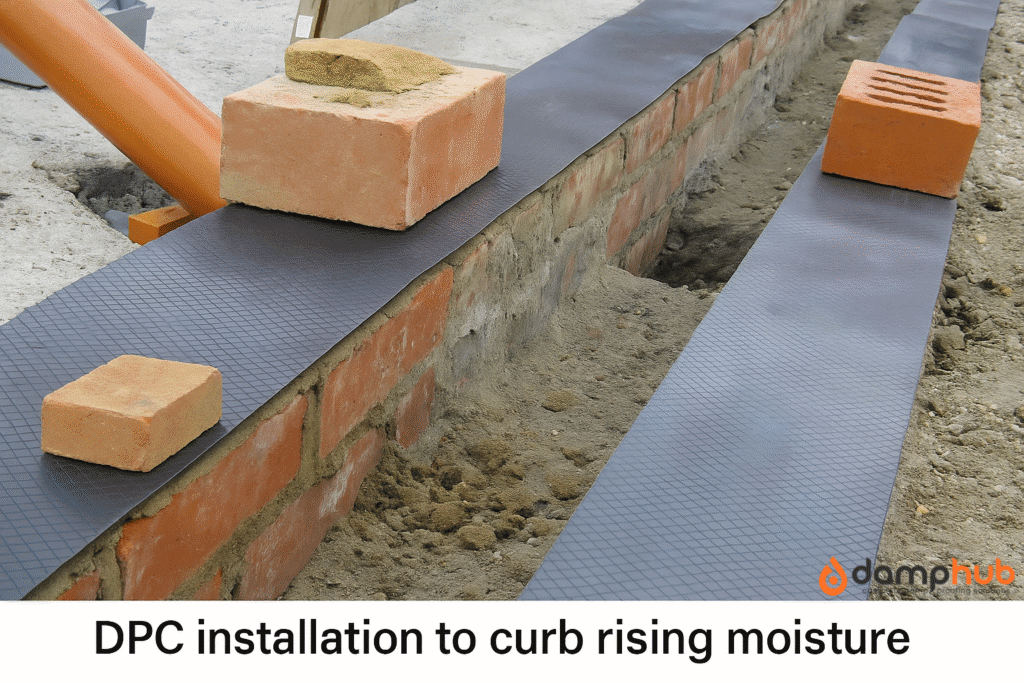
It can be — but it depends on what you’re dealing with. Damp proofing costs vary wildly depending on the cause, how far the damage has spread, and the size of the affected area.
Some problems can be fixed for under a few hundred quid. Others might cost a few thousand. The trick is knowing what you’re paying for — and whether the suggested fix actually matches the diagnosis.
Here’s a rough idea:
Typical price ranges
- Basic damp survey: £150–£400
- Injection damp proof course (DPC): £300–£1,500
- Membrane or tanking systems: £800–£3,000+
- Full basement waterproofing: £5,000–£15,000+
- Rotten timber replacement: £500–£2,500
- Replastering affected walls: £300–£1,500
Those numbers aren’t fixed. For example, if only one internal wall has rising damp, a localised DPC might cost just a few hundred pounds. But if multiple rooms are affected — or the building has no existing DPC at all — the price can climb quickly.
Hidden extras
Most damp proofing near me involves more than just treatment. You might also need:
- Replastering (after hacking off old, damp plaster)
- Joinery repairs (skirting boards, floorboards)
- Redecoration
- Improved ventilation (trickle vents, fans)
These aren’t always included in the first quote, so ask.
👉 Also read: How Much Does Damp Proofing Cost?
What makes it expensive?
- Structural issues or poor access
- Historic or listed buildings
- Misdiagnosed problems leading to over-treatment
- Whole-property tanking (rarely necessary)
- Paying for “free surveys” that lead to inflated quotes
Pro Tip:
The most expensive damp jobs are usually the ones that weren’t needed, or were done badly the first time.
Our Expert Take:
❝Yes, damp proofing can be costly, but not always. A small job might be affordable. The key is getting a proper diagnosis first, from someone who’s not trying to sell you anything. That way, you’re more likely to pay for what you actually need — and not for a sales-driven fix.
Is Damp Proofing Worth It?
If the damp is real and the treatment is right, yes, absolutely. But if you’ve been mis-sold a solution to a problem that doesn’t exist (or isn’t damp in the first place), it can be a waste of money.
That’s the honest answer. Damp proofing near me isn’t one-size-fits-all, and it’s not always necessary.
When is damp proofing worth it?
- You’ve got clear signs of rising damp and no existing DPC.
- There’s penetrating damp from cracked render or a leaky roof, and repairs alone won’t fix it.
- The property has severe condensation issues, and damp treatment is part of a broader fix (like ventilation).
- You’re restoring an older property and want to stop long-term moisture damage from returning.
In these cases, proper damp proofing can:
- Protect structural timbers
- Prevent wet/ dry rot and mould
- Keep walls dry, stable, and insulated
- Maintain resale value
It’s also peace of mind — especially if you’re buying an old house and want to future-proof it.
When damp might not be worth:
- You’ve got a bit of mould in the bathroom from shower steam — that’s a ventilation problem, not rising damp.
- A wall feels cold and damp, but it’s just condensation — no proof of rising or penetrating damp.
- You’ve been offered a chemical injection DPC based on a “free survey” with no real testing — red flag.
Try This:
Always ask why damp proofing is being recommended. If the surveyor can’t explain what’s causing the damp — and how their solution will fix it — think twice.
Our Expert Take:
❝Damp proofing is worth it when it’s targeted, justified, and carried out by someone who’s properly qualified. If it feels like a sales pitch, step back and get a second opinion. Sometimes the best fix isn’t chemicals — it’s just a good roofer or a working extractor fan.

Is Damp Proofing Necessary?
Not always, but sometimes it’s unavoidable.
The word “damp” gets thrown around a lot. Not every patch on a wall means you need to inject chemicals or rip out plaster. But in certain situations, proper damp proofing is absolutely necessary to protect your property from long-term damage.
When it is necessary:
- There’s no damp proof course (or it’s failed), and the walls are pulling up moisture from the ground.
- The building has timber decay due to ongoing damp, and it’s starting to affect the structure.
- You’re renovating or converting a basement where ground moisture is guaranteed unless it’s managed.
- You’re about to sell or buy a home, and a surveyor’s flagged damp issues that could delay or block the transaction.
In these cases, damp proofing near me isn’t just necessary — it’s urgent. Leaving it untreated can cause rot, mould, damaged plaster, stained walls, and even movement in the structure.
👉 Read more from us: How Much Can Damp Devalue Your Home?
When it isn’t:
- The issue is surface-level condensation from poor ventilation.
- The damp patch turns out to be a leaking pipe, not rising or penetrating damp.
- You’re treating a small spot because it “looks ugly” — but there’s no underlying issue.
Pro Tip:
If a contractor tells you every bit of damp needs chemical treatment, ask for proof. A good damp surveyor will show you moisture readings, inspect the source, and explain whether the problem even needs treatment at all.
Our Expert Take:
❝ So, is damp proofing necessary? Sometimes yes, sometimes no. It depends entirely on the type of damp, the cause, and the building itself. What matters most is having someone who can tell the difference — and isn’t just trying to sell you a job.
What are the Building Regulations for damp proofing?
In the UK, damp proofing near me is covered by Building Regulations, specifically under Approved Document C: Site preparation and resistance to contaminants and moisture. These rules set out how new buildings and major renovations must be protected from damp, especially rising moisture from the ground.
The most common requirement? A damp proof course (DPC). This is a physical or chemical barrier designed to stop water from travelling up through the walls. And yes, damp proof course regulations in the UK are very clear.
Here’s what the regulations say:
- A DPC must be installed in all new homes and extensions
- It should sit at least 150mm above ground level, to stay clear of rain splashback or surface water
- The barrier needs to be continuous across walls, floors, and around corners
- It must be durable and appropriate to the type of construction
You’ll also find additional rules for things like:
- Basements or cellars, which often need full waterproof tanking
- Membranes under concrete floors, to stop moisture from coming up from below
- Ventilation, to prevent trapped damp from lingering indoors
What about older or listed buildings?
Properties built before the 1870s often didn’t have any DPC — or used traditional methods like slate. Installing a modern chemical DPC in these homes can sometimes cause more harm than good. For listed buildings, you’ll usually need permission from a conservation officer before adding or altering damp proof systems.
Good to Know:
If you’re re-rendering or replastering after rising damp, building control may ask to see proof that you’ve installed or repaired a proper DPC, not just covered up the symptoms.
Our Expert Take:
❝In short? The regulations demand that homes are built or renovated to resist damp properly, and the damp proof course is at the heart of that. Whether you’re putting in a new kitchen or building from scratch, make sure your plans meet UK damp proofing regulations from the start.
👉 Read more from us: 10 Best Damp Proofing Specialists in Swindon UK

Final Thought
Damp isn’t just a nuisance — it can damage your home, drain your budget, and delay your plans. The right fix starts with the right diagnosis.
Don’t guess. Get a proper inspection, and act based on facts, not sales talk. It’ll save you time, stress, and serious money down the line.
Quick Recaps
- Check for signs of a failed or missing DPC — especially in older or renovated homes.
- Don’t jump into treatment based on sales-led surveys — always get independent advice.
- Use the report to plan repairs, not just meet lender demands — it protects your investment.
- Explore local grants if damp is causing health or safety issues — help might be available.
- Follow UK building regulations when renovating — especially with basements or extensions.
Damp Proofing UK: Common Questions Answered
What are the specifications for damp proof course?
A DPC must sit at least 150mm above external ground level and form a continuous, waterproof barrier across walls.
It must connect with other damp protection (like membranes or trays) and use durable materials suitable for the building type.
How to identify a damp proof course?
Look for a thin black line in the mortar joint, just above ground level — often plastic, bitumen, or slate.
If it’s missing and the walls show signs of rising damp, it may have failed or never existed. See our full guide
What should a damp proof course be?
It should be waterproof, continuous, and long-lasting.
Whether physical or chemical, it must fully block rising moisture without damaging the structure. It must suit the property’s materials and age.
Which material is used for damp proof course?
Common materials include plastic sheeting, bitumen, engineering bricks, slate, or chemical injection creams.
The right choice depends on the property’s age, structure, and access.
What are the two main categories of damp proof course?
Physical DPCs – sheets or layers inserted during construction.
Chemical DPCs – injected into existing walls to form a barrier.
How to build a damp proof course?
In new builds, a DPC layer is laid during wall construction. In older homes, a chemical DPC is injected through drilled holes, then allowed to cure before re-plastering.
What are the alternatives to damp proof courses?
Options include improving drainage, tanking, lime plaster, electro-osmotic systems, and raising ground levels.
These are often used in heritage buildings or where DPCs fail.
What is the difference between flashing and damp-proof course?
A damp-proof course (DPC) stops moisture rising up from the ground into walls. It’s installed horizontally, near the base of the walls.
Flashing stops rainwater from entering through joints in roofs, chimneys, or around windows. It’s usually installed at an angle and higher up the building.
In short:
DPC = protects from rising damp (ground moisture)
Flashing = protects from rainwater (external leaks)

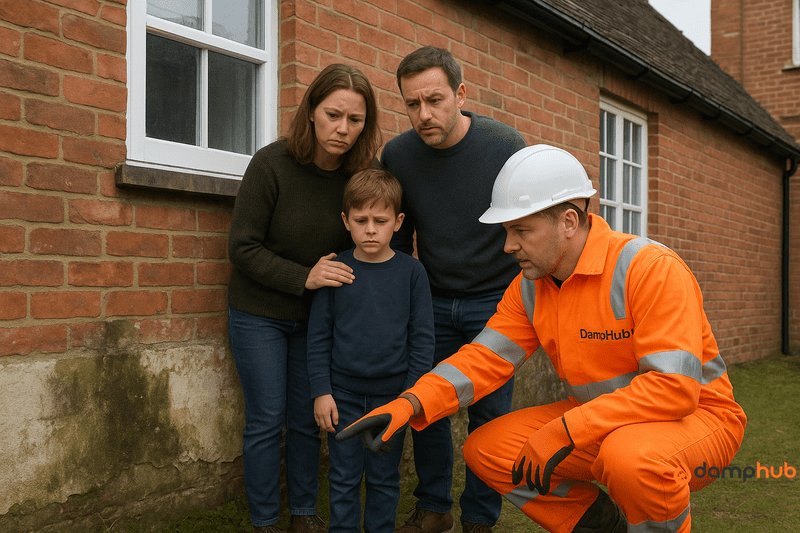
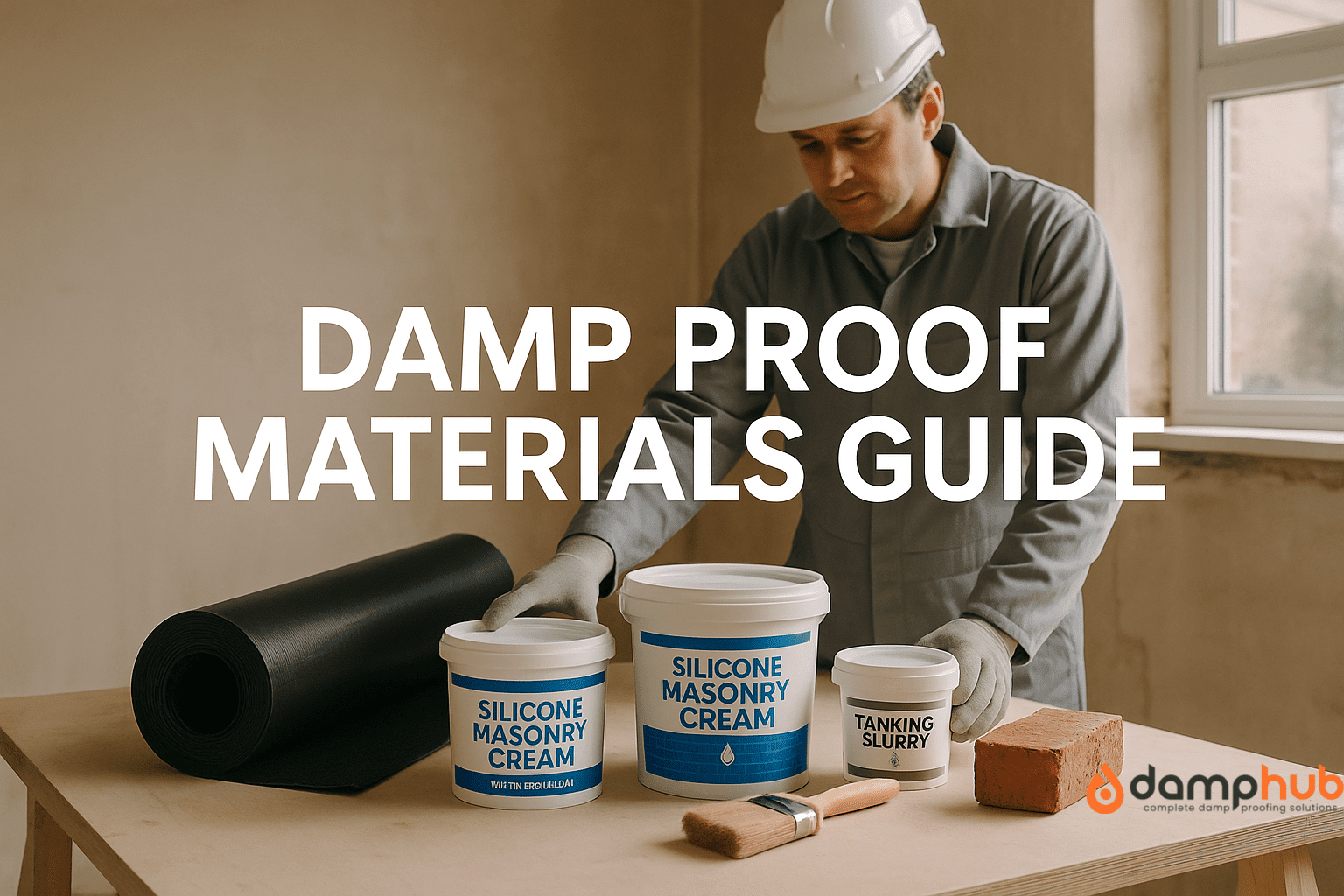
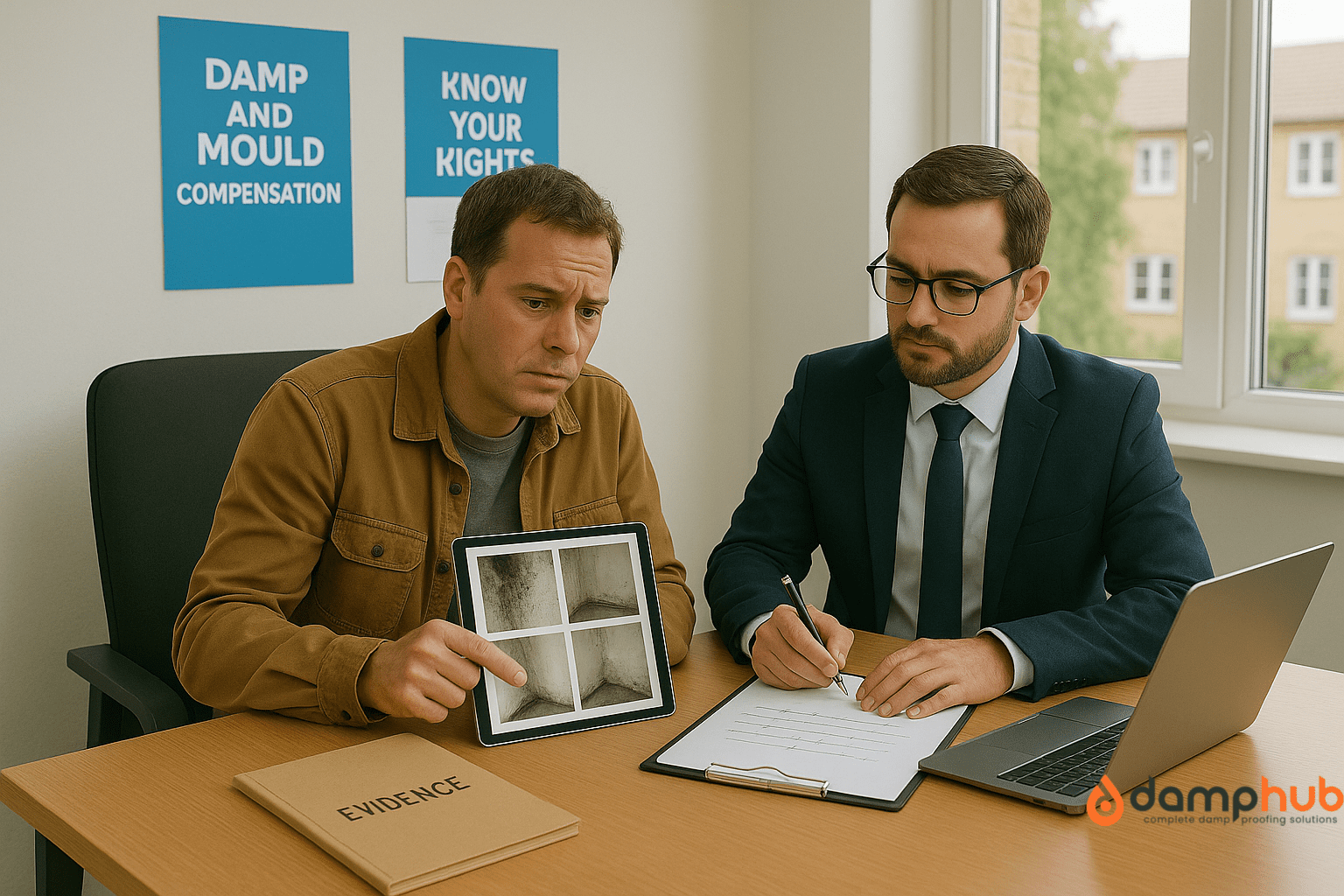
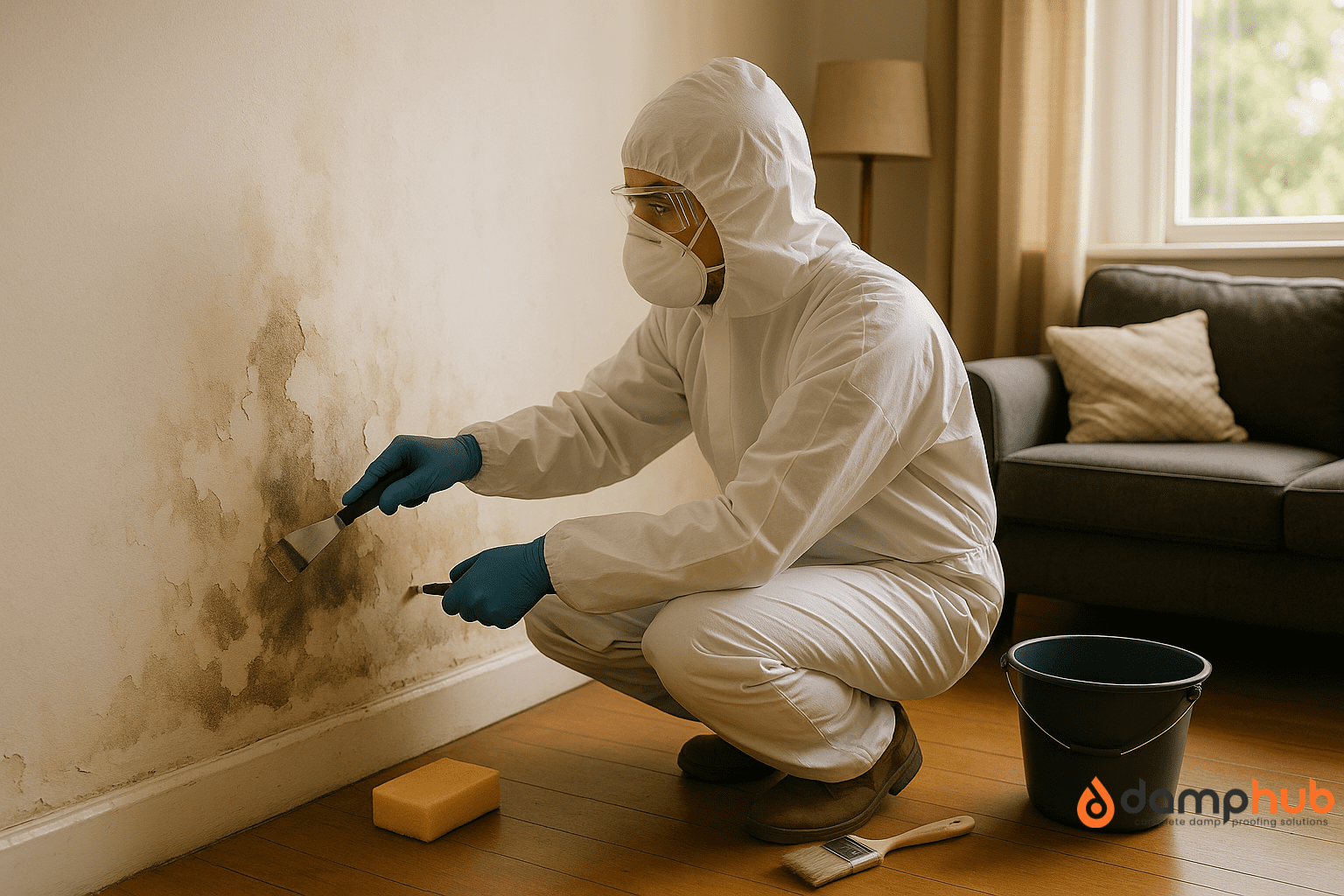
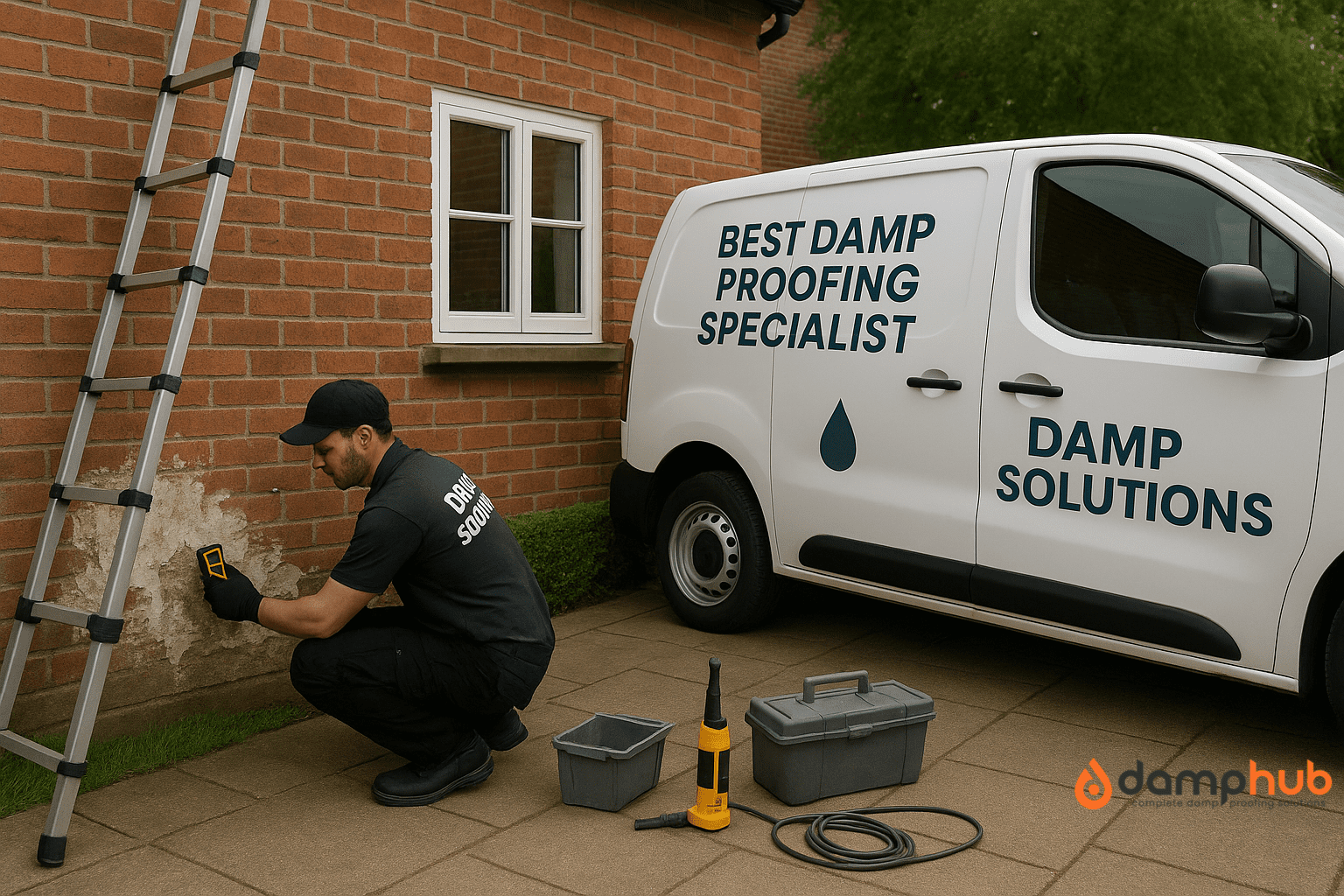
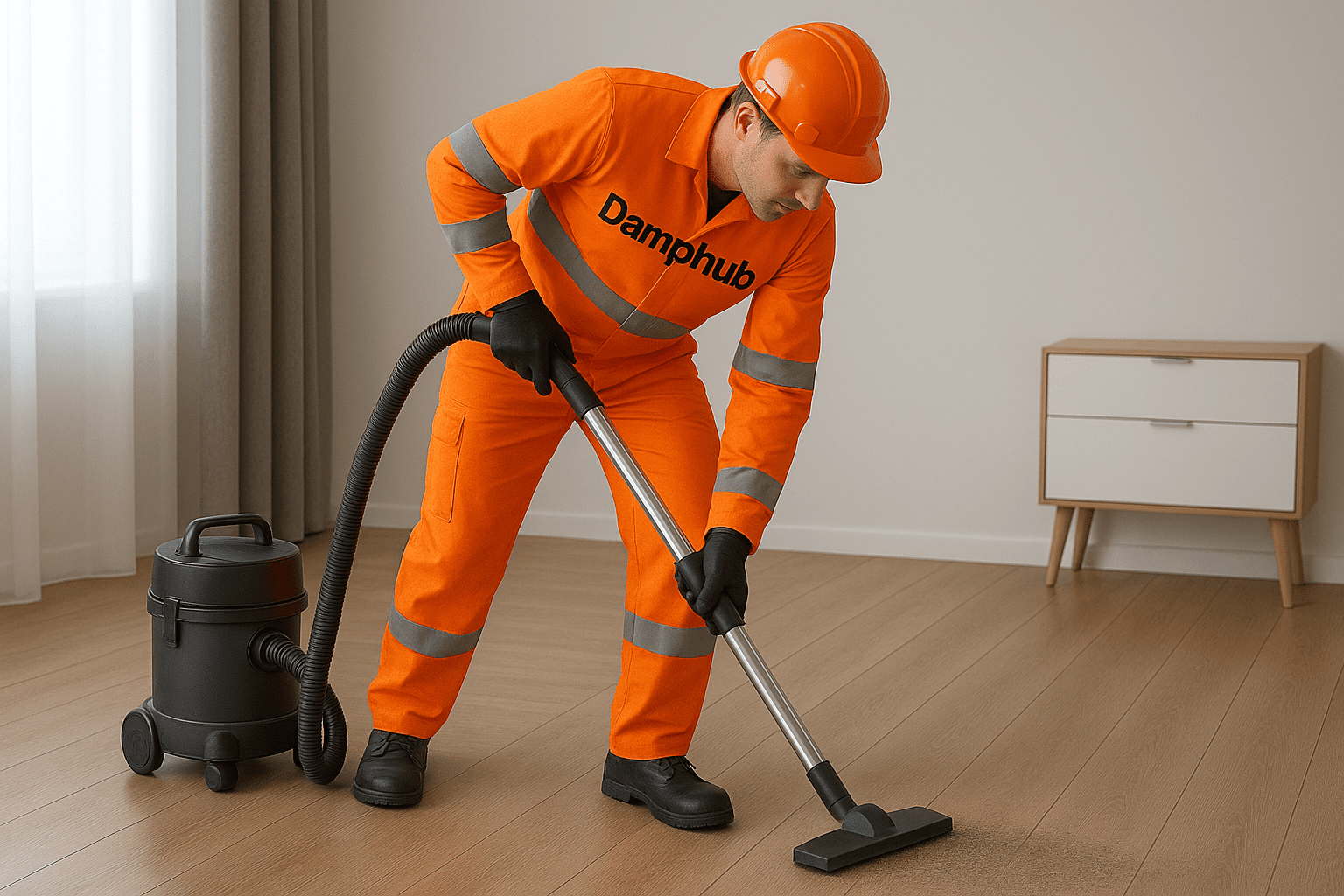
Such informative information. Every word is delivering what I was looking for. It really help me to understand damp proof UK details.
Such informative content .Every word is delivering what I was looking for. It really help me to understand damp proof UK details.